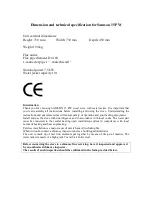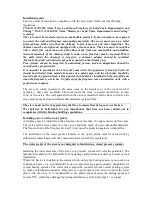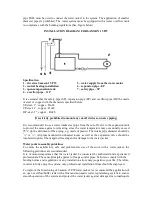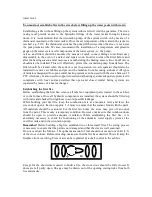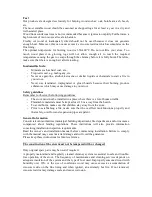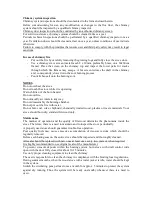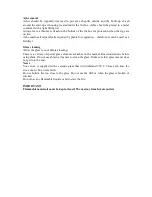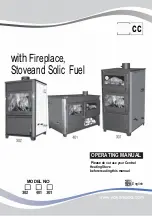
Installation guide
The stove must be installed in compliance with the provisions of relevant local binding
regulations.
PN-EN 13229:2002 Norm “Inserts and Open Fireplaces for Solid Fuels. Requirements and
Testing”, PN-EN 13240:2002 Norm “Heaters for Solid Fuels. Requirements and Testing”
is saying:
The stove must be located away from combustible products. It may, therefore, be required
to protect the wall and fireplace surrounding materials. The stoves must rest on a solid,
fireproof base. Make sure that the chimney is free from soot and other impurities. The
chimney must be air-tight and equipped with a cleanout door. The stove must be installed
with a direct flue connection and a flue liner made from non combustible and oxidation
resistant materials. If the chimney draft is weak, a new flue liner may be required. Where
the draft inside the chimney is excessive, a chimney adapter should be installed.
Alternatively, draft control devices may be mounted on the chimney top.
Flue systems should be inspected by authorised person, and any adaptations should be
carried out by professionals.
It is essential to provide fresh air into the room where the appliance is located. Fresh air
should be delivered from outside by means of a patent pipe, and the air intake should be
located near the ground level. A flue adaptor should also be installed to help cut off the air
when the fireplace is not in use. To fully enjoy the fireplace, leave installation work with a
professional company.
The air vent, which operates in the same room as the fireplace or in the room which it
ventilates, may cause problems. The room where the stove is located should have at least
12m² of floor area. The wall against which the stove is installed and the floor in front of the
stove must be made from non-flammable materials (at least 50cm).
The stove must not be dragged along the floor to ensure that its legs are not broken.
We shall not be held liable for any installations that have not been carried out in
compliance with the binding building regulations.
Installing a stove with a water jacket
A fireplace may be installed on the premises of not less than 12 square meters of floor area.
The wall and the floor adjacent to the stove should be made of non-combustible materials.
The floor in front of the fireplace (at least 50 cm) must be protected against accidental fire.
The installation of the water jacket elements in the open system must be carried out by
authorised professionals with due consideration for local safety regulations.
The water jacket of the stove is not designed to function in a closed pressure system.
Installing the water elements of the stove in a pressure system will void the guarantee. The
manufacturer shall not be held liable for any damage and/or defects caused as a result of such
installation.
Where the device is installed in the system which, during the heating season, is not used on a
continuous basis, it is recommended to use an anti-freezing agent specially designated for
central heating systems. The water jacket should be connected to the central heating system
by means of threaded connectors. Only steel or copper pipes can be used to connect the water
jacket with the stove. It is inadmissible to use plastic pipes because the heating agent can
exceed 95°C, which may damage the hating installation system. Steel pipe 1” or copper


